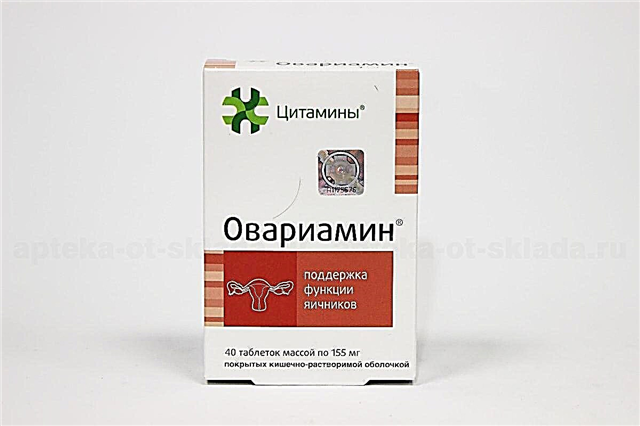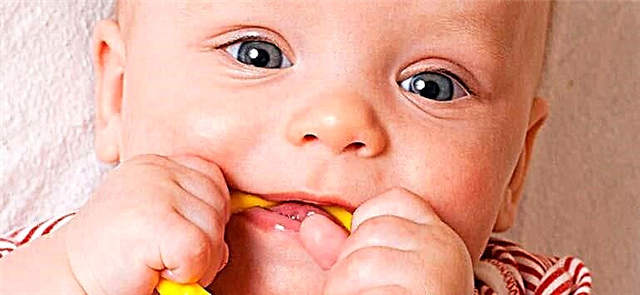
The first, as you know, the Earth was inhabited by bacteria. There are millions of them, they are everywhere: in water, air, soil, inside and around each of us. "Good bacteria" help us, but "bad" bacteria often cause quite serious diseases. Today, everyone, even those far from medicine, has a very specific understanding of antibiotics, and is guided by at least a few names of drugs. On hearing and the term "broad-spectrum antibiotics." Let's figure out what it is and start from the very beginning.
A bit of history
The first antibiotic was obtained in 1928 by the Englishman Alexander Fleming. It was Penicillin, but it turned out to be rapidly disintegrating, and did not even pass the expert committee at the medical club. Only 10 years later, the Americans Howard Florey and Ernst Chain isolated the antibiotic as a separate species resistant to the environment, and immediately tested it on the wounded in WWII hospitals.

Beginning in 1943, penicillin was mass produced, and two years later, Flory and Chain were awarded the Nobel Prize.
Antibiotics are a group of substances (semi-synthetic, animal or plant) capable of destroying bacteria, microorganisms, fungi.
Antibiotics are conventionally divided into bactericidal and bacteriostatic. The first are guys of a lethal disposition, they immediately destroy the pest without unnecessary lyrics, the second are intellectuals, they have a scientific and long-term approach - they block the enemy's ability to reproduce.
Some antibiotics are more effective at dealing with one type of bacteria, while others are more effective with another. But there are such "fighters" for our health who are capable of destroying completely different microbes. These are the very broad-spectrum antibiotics.

It is not always clear which bacteria, fungi or opportunistic flora caused the disease, and there is no time for laboratory tests: the child needs urgent help. In such cases, doctors prescribe broad-spectrum antibiotics. For example, with meningitis in a toddler, the issue of life and death can be resolved in a matter of hours, and laboratory samples will be ready only in 2-3 days. While the doctors are figuring out what caused the baby's serious illness, antibiotics of a wide spectrum of action immediately come out to fight unknown pests.

Broad spectrum antibiotics
Penicillins
Mainly they have a bactericidal effect. They destroy the cell walls of bacteria. Effectively and quickly destroy staphylococci, pathogens of gonorrhea, E. coli, salmonella, whooping cough. The most prominent representatives of the series are "Amoxicillin" and "Ampicillin".


Cephalosporins
These antibiotics differ from the previous group in greater resistance to those enzymes that microbes produce in their defense. Where the penicillin fighter dies, the cephalosporin fighter will survive and finish the job. The most famous antibiotics of the series that are used in pediatrics are Ceftriaxone, Cefotaxime, Cefalexin, etc.
Carbapenems
These are relatively new antibiotics. Such drugs are used mainly in severe conditions, nosocomial infections. In everyday life, we rarely see these names. And this is good. But in fairness, I will name carbapanem antibiotics by their names: Meropenem, Ertapenem, etc.

Tetracyclines
These antibiotics do an excellent job against various bacteria and even some of the simplest organisms. But they are not warriors against mold fungi and acid-fast bacteria. The most famous representatives of this series are "Tetracycline" and "Doxycycline".


Monobactams
These antibiotics have a rather narrow profile. They are usually thrown into the fight against gram-negative pests - for skin infections, soft tissues, the musculoskeletal system, and also for sespis. The most famous representative of the group, used in pediatrics, is Aztreonam.

Aminoglycosides
These "universal soldiers" are resistant not only to different types of bacteria, but also to other antibiotics. You are probably familiar with their names - "Streptomycin", "Gentamicin".


Amfelikols
These are real giants among their relatives. They are able to destroy not only bacteria, but also spirochetes, and even some dangerous viruses. You, too, most likely met them. These are "Levomycetin", "Sintomycin", "Iruksol".
Broad-spectrum antibiotics (ASHD) on the pharmacy counter have several pharmacological forms:
- drops;
- suspension powders;
- pills;
- dry substance for injections - intramuscular and intravenous injections.
But there are no antibiotics in the form of suppositories and in syrup.
Benefit or harm?
There are undoubtedly advantages: broad-spectrum antibiotics quickly penetrate the tissues of the body and accumulate where they are most needed - at the site of the infection. Compared to other antibiotics (narrow focus), they are safer, less likely to cause allergic reactions. The manufacturers state that they should not be taken at the same time as drugs for the prevention of dysbiosis, although this point is questionable. And finally, broad-spectrum antibiotics are quite compatible with other drugs.
But any, even a low-toxic antibiotic of the last generation, does not possess intelligence and a system of recognition of "friend or foe", and therefore effectively destroy both harmful and beneficial microorganisms. Therefore, a rare course of antibiotic treatment does not end with dysbiosis or thrush (in girls).

And also any antibiotic weakens the human immune system... Think for yourself, why should the immune system try and fight the infection, if the "stray guys" will quickly do everything for it?
Well, one more fly in the ointment. Bacteria do not sleep, and do not give up without a fight, and therefore their resistance to antibiotics is constantly increasing. The more often a person uses antibiotics, the more resistant pathogens become to them. Recently, Russians have been eating antibiotics with or without how often and completely uncontrollably that scientists and the Ministry of Health have sounded the alarm. And now, or rather from January 1, 2017, without exception, all antibiotics in Russian pharmacies are sold strictly according to prescriptions... This is a necessary measure that will not allow bacteria with their significantly increased resistance to win this war for the life of mankind.

Terms of appointment
Consider situations in which a doctor may prescribe broad-spectrum antibiotics to a child. Contrary to popular belief that influenza and SARS are easy to defeat thanks to antibiotics (this is how 46% of Russians think, according to VTsIOM), in the case of diseases caused by viruses, antibiotics are just completely powerless. These ailments must be treated with antiviral drugs.

And "universal" antibiotics will be prescribed for your child in the following cases:
- High body temperature over 39 degrees (over 38 degrees - for babies under one year old) caused by a bacterial infection,
- Bronchitis,
- Otitis,
- Sinusitis,
- Angina,
- Tonsillitis and paratonsillitis,
- Whooping cough,
- Pneumonia,
- Meningitis,
- Severe intestinal infection
- Postoperative period (for prevention).

I emphasize once again that antibiotics are not prescribed for influenza, SARS, chickenpox, measles and hepatitis, as well as rubella and herpes. The exception is when a child has a bacterial infection with a viral infection, this usually becomes clear 4-5 days after the onset of the disease.
If the child, despite the prescribed antiviral treatment, does not feel better, one can suspect that bacteria are to blame. Doctors must confirm this by taking blood and smears from the baby for analysis.
List of the most common drugs
Amoxicillin
An antibiotic of the penicillin group, successfully defeating staphylococci, streptococci, E. coli. But some bacteria secrete a special enzyme that breaks down the antibiotic. This drug can be prescribed to your child for colds, pharyngitis, tracheitis, pneumonia. Angina and otitis media, cystitis and pyelonephritis will not resist him. And also this antibiotic is widely used to treat dysentery and salmonellosis. It is contraindicated in children with allergy to flowering (hay fever) and liver failure. All forms of this medication are taken exclusively by mouth. For children from birth to 4 years old - 5 years old, it is preferable to give the antibiotic in suspension. The dosage and dosage regimen is prescribed by the doctor, based on the age and weight of the baby, as well as the severity of the tiny disease. The starting price of a medicine in pharmacies is from 70 rubles.


Augmentin
This is the same "Amoxicillin", only reinforced with clavulanic acid, which protects the antibiotic from harmful enzymes produced by bacteria. The antibiotic comes in powder for suspension and powder for injection. Tablet form - intended for adults. Allowed for use even by newborns, however, in a dosage determined by the doctor and exclusively for vital indications. For babies from 2 months, the dosage is calculated based on body weight. Children aged 2 to 3 years are given 5-7 ml (depending on the severity of the disease), from 3 years to 7 years - 5-10 ml each, children aged 7 to 12 years - a single dose of 10-20 ml (depending on the severity of the diagnosis). The cost of the drug in pharmacies starts from 150 rubles for a suspension and 260 rubles for tablets.

Amoxiclav
This is another follower of "Amoxicillin", also fortified with clavulanic acid. According to the reviews of parents and doctors, this is a very good antibiotic for children, which is easily drunk by the baby (in the form of a suspension), and helps quite quickly. Also the drug is approved for use by children under 1 year old. The price of the drug is from 360 rubles for tablets, from 400 rubles for soluble tablets and from 150 rubles for a powder for diluting a suspension.

Zinacef
This is a cephalosporin antibiotic, a second generation drug. It is very effective for respiratory infections (bronchitis, lung abscess, pneumonia), has proven itself as a remedy for the treatment of otitis media, tonsillitis, furunculosis, meningitis, as well as joint diseases, including after injuries and surgeries. Release form - powder for preparation of injections. The child's dosage should be calculated by the doctor based on the age and weight of the patient. Approved for use in children under 1 year old for special indications. The price in pharmacies is from 200 rubles per bottle.

Summamed forte
This is an antibiotic - azalide. He copes well with skin diseases - various dermatoses, but his main "strong point" - diseases of the upper respiratory tract, such as tonsillitis, sinusitis, pharyngitis. Available in tablets - for adults and in powder for self-diluting suspension for children. The age limit is for children 6 months and older. Suspensions are distinguished by delicious fruit aromas - banana, raspberry. The cost of a bottle of powder for preparing a suspension is on average from 600 rubles.

Suprax
It is a third generation cephalosporin antibiotic. The drug successfully copes with gram-positive and gram-negative bacteria, but "falls" before the Pseudomonas aeruginosa, most varieties of staphylococcus. For children, the drug is available in the form of granules for the preparation of a suspension with strawberry flavor. The drug is also recommended for children from 6 months. The cost of a package of "Suprax" in pharmacies is from 700 rubles.

Flemoxin Solutab
It is a penicillin antibiotic. It is very popular among pediatricians, the drug is prescribed even to newborns in case of respiratory infections, diseases of the genitourinary system and intestinal infections. For babies, the dose is calculated based on the weight of the toddler. A single dose for children from 3 to 8 years old is from 500 to 750 mg, for children over 13 years old, it will be equal to that of an adult. The price of the drug in pharmacies is from 254 rubles.

This is not a complete list. It can still contain dozens of names of antibiotic drops (eye drops, in the ears), hundreds of names of tablets and suspensions.
General rules for taking antibiotics for children:
- Be sure to follow your doctor's instructions. Even with a visible improvement in the condition, you cannot reduce the dose or cancel the drug, since only the weakest representatives of bacteria and fungi will die. The rest will undergo a mutation and develop resistance to the drug.
- Carefully observe the child on the first day after the start of taking the antibiotic, allergic reactions, if they appear, then this happens after 24-36 hours.
- The course of treatment with broad-spectrum antibiotics is at least 5 days. In the most severe cases, the doctor may prescribe them for 14 days.
- Try to give your child the medicine at regular intervals every day at the same hours with or immediately after meals. You cannot drink antibiotics on an empty stomach.
- It is advisable for a child who takes antibiotics to establish a diet: exclude fatty and fried foods, sour berries and fruits from his diet, so as not to create an additional burden on the liver.
- Talk to your doctor about taking medications that improve your gut flora during antibiotic treatment.
- If on the third day of taking the antibiotic, the baby does not feel better, inform the doctor about it. Most likely, you will need to adjust the prescription and choose another antibiotic for children.

In the next video, the popular children's doctor Komarovsky talks in detail about antibiotics, what they are for and in what cases they are used.



